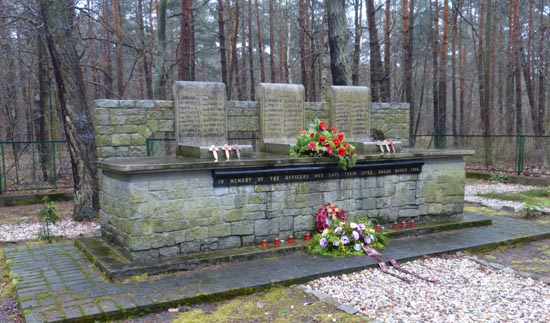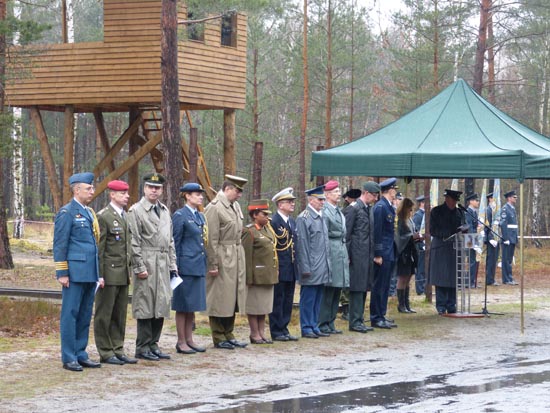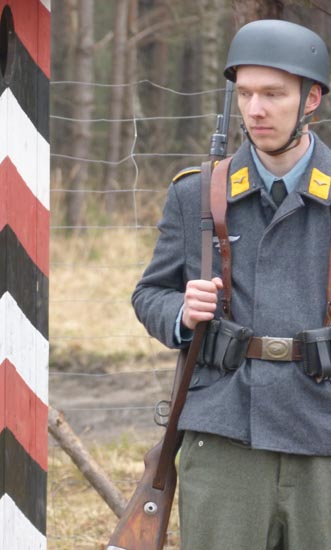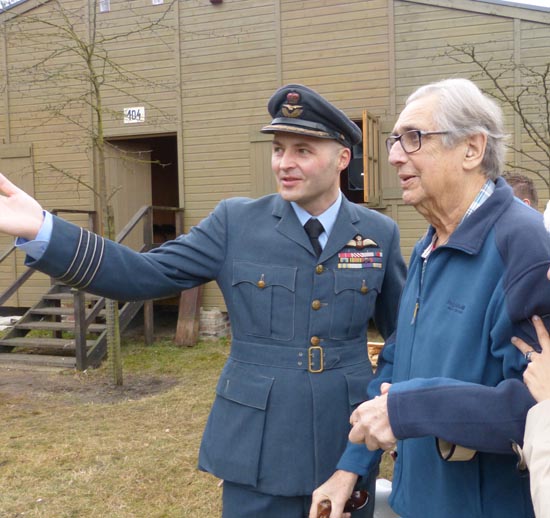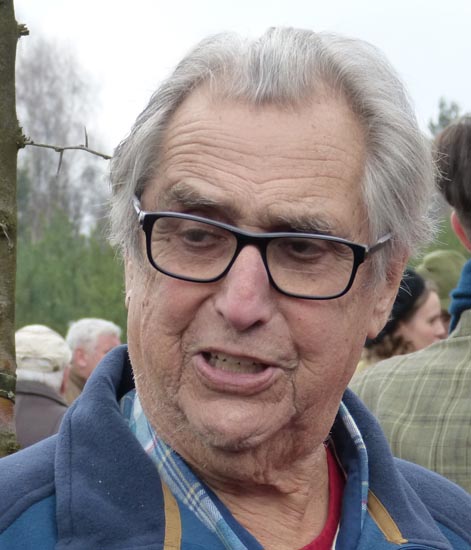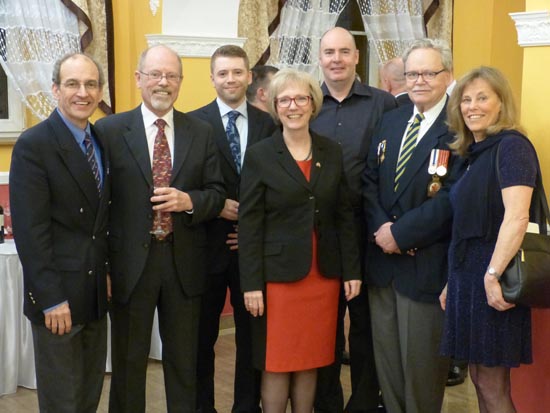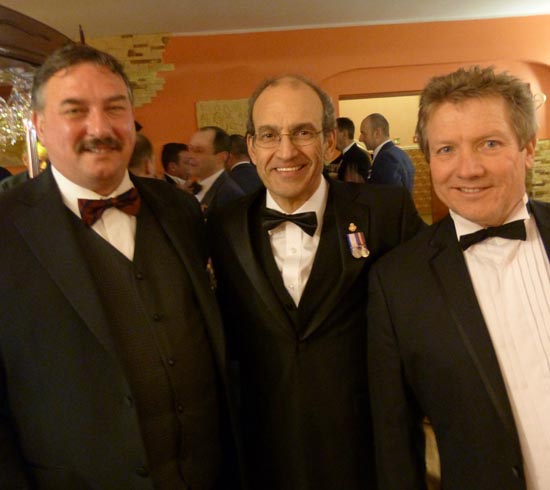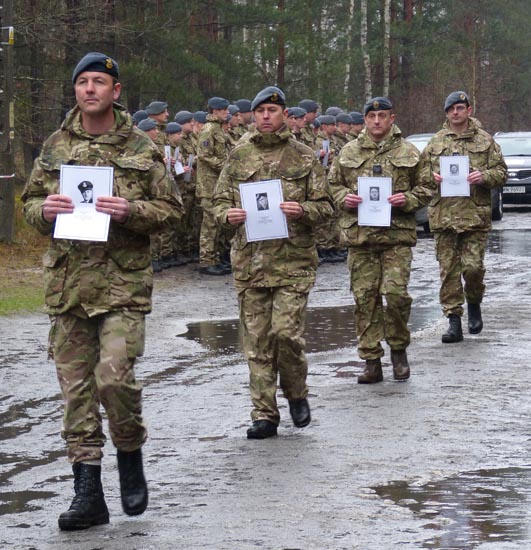
The rain was steady. The air must have been as cold as the day they were commemorating – a few degrees just above zero. The years had changed the way the place looked. But neither the weather nor time had washed away the memory. During the 70th anniversary ceremony of The Great Escape, I witnessed, 50 young Royal Air Force officers marched in single file past the reviewing stand. Each contemporary soldier carried the photo of one of the 50 air officers murdered following famous prison breakout in March 1944. One of the commemorating airmen was Simon Flynn.
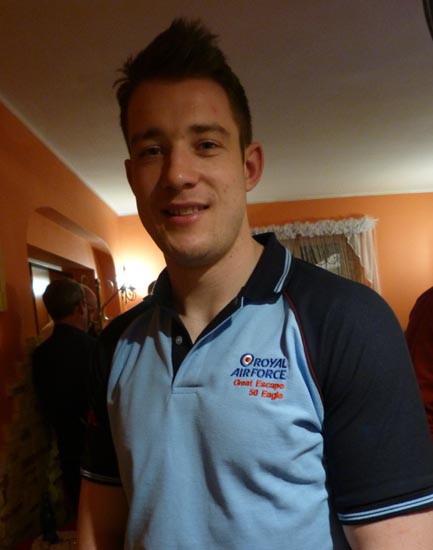
“I loved the movie, but I knew it wasn’t fact,” Flynn said. “But I feel honoured to be part of the commemoration.”
The more I attend these observances harkening back to wartime events of the 20th century, the more I’m reminded that these conflicts happened nearly two generations ago. People wonder out loud to me in another generation whether anyone will remember, whether anyone will care. If you’ll allow me this column to respond to that suggestion, I’d like to illustrate why stories such as The Great Escape will not die with its last witnesses, but will continue to capture the public’s imagination and prompt further questions, research and more stories.
Simon Flynn, a 25-year-old helicopter pilot in the RAF, is a primary example. Yes, he is military. Yes, he does have a direct armed forces connection – via the air force – with the story of the Commonwealth air officers who built the famous tunnels out of Stalag Luft III in 1943-44. And yes, he’s been taught to preserve the past while serving the future.
But the difference was that on the day following the commemoration of the escape – March 24 – he and the other 49 RAF air officers marching in that rainy ceremony were going further. On March 25, they packed up their kit bags and marched for four days on foot 107 miles to the town of Poznan where the cremated remains of the 50 murdered officers are housed today. And Flynn wasn’t just following his superior’s orders. He’d volunteered.
“We all went through 10 weeks of training,” he said. “We walked four-to-five miles a day at first; but then we worked up to 18 miles a day near the end.”
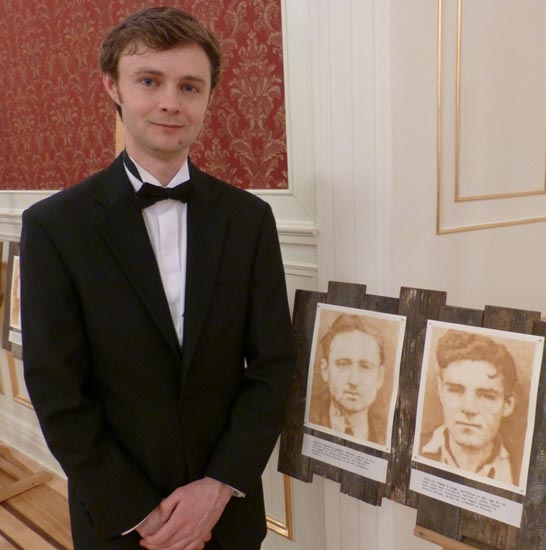
But the unique commemoration instinct was not limited to the RAF officers. The first day I spent in Zagan, Poland, the town adjacent to the wartime German POW camp, I met a young contemporary artist named Jon England. In fact, he joined me over dinner at a reception staged by Alexandra Bugailiskis, the Canadian ambassador to Poland. I asked why a man as young as he – in his 20s – cared about something as apparently ancient as The Great Escape.
“The story,” he said. “It’s such a compelling story.”
An artist from Somerset, England, Jon England had originally become interested in the story because of its ties to his part of the U.K. But more than that, the young artist became curious about the day-to-day life among the POWs at Stalag Luft III during the war. In particular, he was drawn to the product called “Klim” (milk spelled backwards) and its versatility in the lives of the prisoners-of-war.
Not only did the contents of the Klim cans – powdered milk – sustain the men in their diets. But 750 of the empty tins (when put together) became the ventilation duct for the tunnellers in the escape Tunnel “Harry.” Jon England felt so inspired by the Klim, that he reconstituted the milk powder into sepia-toned paint, which he then used to paint portraits of the 50 slain officers.
“There’s a particular physical and metaphorical resonance in utilizing milk to reproduce the identity card photos of the 50,” England said. “It is the most basic, humble, elemental foodstuff, sustaining life by multiple means.”
The portraits lined the reception hall on the anniversary of the escape.
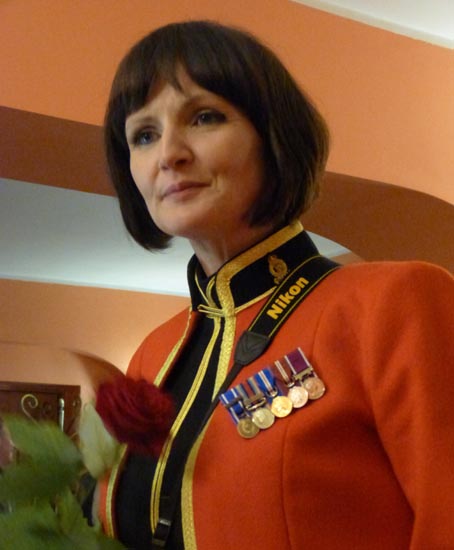
And beside me as we dined that night in our best bib and tucker, I met British Warrant Officer Maxine Staple, the young woman who had assisted RAF Group Captain David Houghton orchestrate the formal reception on the anniversary. Not unlike artist Jon England WO Staple had dedicated much time and effort to this event. She had helped arrange for the RAF band, the food catering, the speakers’ list and even the civilian guest list, including myself and another dozen Canadians who’d travelled 3,000 miles to pay our respects to the survivors of Stalag Luft III and the murdered 50 officers. Yes, it was her duty, as an officer in the Royal Army, but like RAF chopper pilot Simon Flynn there was more than duty here.
“We are here to honour the men who were killed,” Flynn said. “But we’re also here to learn what gave them the spirit, the strength, the courage to survive and become the actual legend of The Great Escape.”
